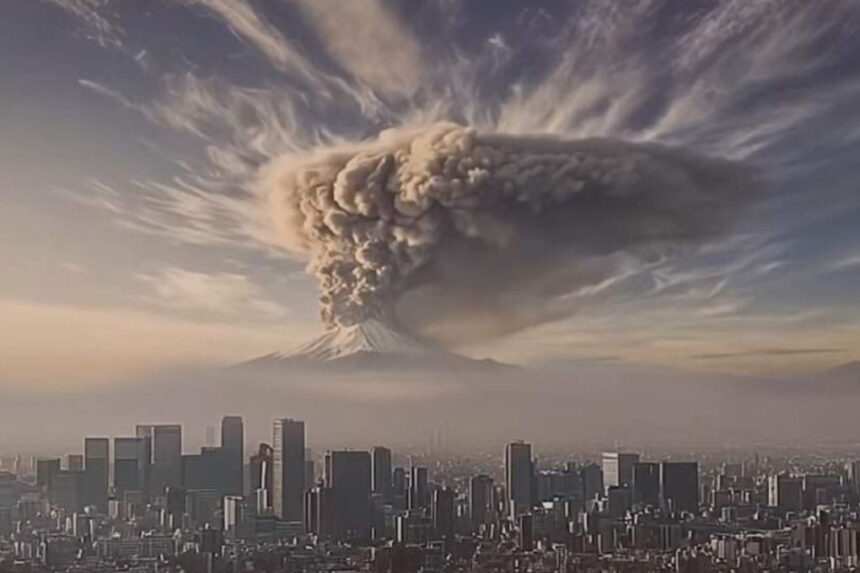The Tokyo Metropolitan Government has released an AI video showing the potential impact of a Mount Fuji eruption on the capital.
The video shows how volcanic ash would start falling in Tokyo within 1-2 hours after an eruption, with 2-10 cm of ash expected to accumulate. The western part of the capital city could see up to 30 cm of ash.
This ash would disrupt trains and planes, knock out powerlines, and cause widespread outages in phone and internet services.
Driving would become extremely dangerous with slippery roads, and drivers will not be able to see the road because of the ash.
Persons with respiratory conditions like asthma, as the ash irritates the lungs, will suffer.
Food and supplies would quickly run out, which means officials will have to encourage residents to stock up on essentials to last at least three days.
Evacuation would be recommended mainly if ash accumulation exceeded 30 centimeters, especially near vulnerable wooden buildings.
However, some experts, such as Professor Kimiro Meguro from the University of Tokyo, caution that this video depicts a worst-case scenario under very specific conditions, rather than a likely event.
Professor Kimiro Meguro, in an interview with This Week in Asia, said: “The simulation that is being shown would only ever happen under special conditions, and this is not a high-probability event.
“It shows a worst-case scenario that is built on the assumption of what would happen in the event of an eruption of Mount Fuji.”
“Maybe the person in charge of disaster management for volcanoes was worried that they would be accused of not providing the public with enough warnings or information.”













